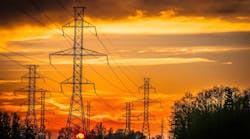Many states are deploying renewable generation sources at a significant rate to meet renewable portfolio standards. As part of this drive to meet renewable generation levels, significant additions of wind generation are planned. Due to the highly variable nature of wind generation, significant energy imbalances on the power system can be created and need to be handled. This report examines the impact on the Northwest Power Pool (NWPP) region for a 2019 expected wind scenario. One method for mitigating these imbalances is to utilize plug-in hybrid electric vehicles (PHEVs) or battery electric vehicles (BEVs) as assets to the grid.
PHEVs and BEVs have the potential to meet this demand through both charging and discharging strategies. This report explores the usage of two different charging schemes: V2GHalf and V2GFull. In V2GHalf, PHEV/BEV charging is varied to absorb the additional imbalance from the wind generation, but never feeds power back into the grid. This scenario is highly desirable to automotive manufacturers, who harbor great concerns about battery warranty if vehicle-to-grid discharging is allowed. The second strategy, V2GFull, varies not only the charging of the vehicle battery, but also can vary the discharging of the battery back into the power grid. This scenario is currently less desirable to automotive manufacturers, but provides an additional resource benefit to PHEV/BEVs by theoretically doubling their capacity value to the grid.
Utilizing these two charging strategies, this report explores the potential of PHEV/BEVs to meet the entire additional energy imbalance imposed by adding 10 GW of additional wind to the NWPP. Vehicle travel patterns are based on data from the 2001 National Household Travel Survey data. Under certain market scenarios and penetration levels, the number of PHEV/BEVs in the total vehicle fleet provides a feasible resource for meeting the additional imbalance imposed by the wind generation.
The results indicate that the emerging electric vehicle fleet could make a substantial contribution toward meeting the new balancing requirements associated with the grid integration of growing wind technology deployment. To what degree this potential can be realized in the future will depend on the economics of the implementation and a viable and compelling business model, either for the individual electric vehicle owner, or a third-party service provider....(Read more...)

